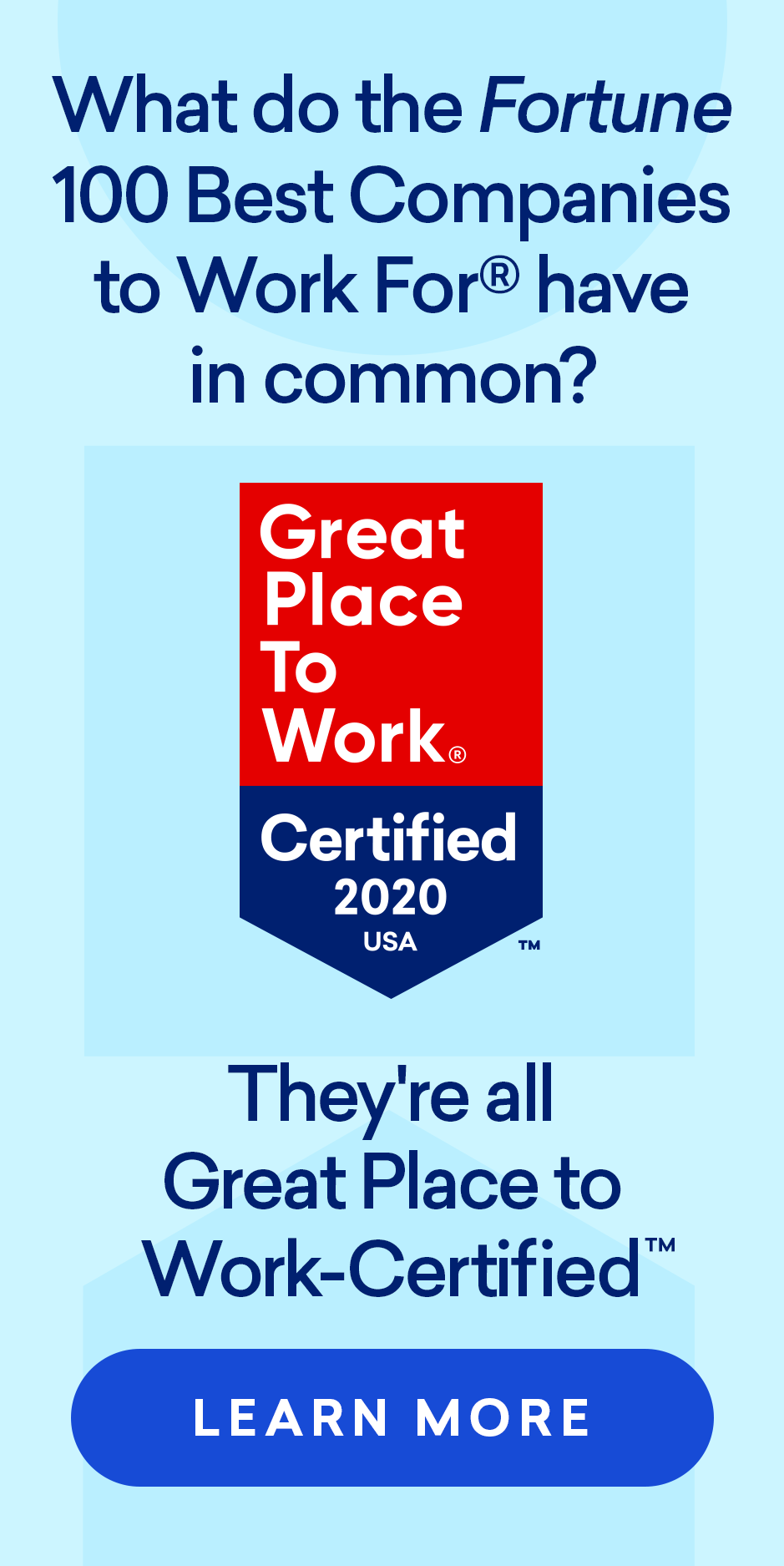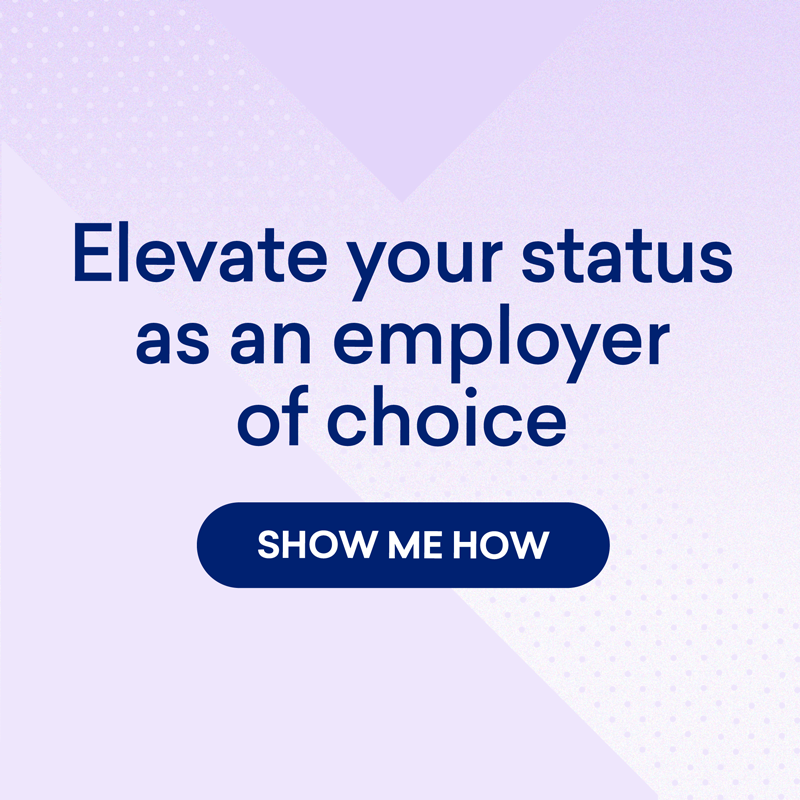Fifteen years ago the thought of intentionally creating a great workplace was a curiosity seemingly limited to the avante garde. Today, analysis of these successful organizations has led “serious” leaders of every stripe to understand the necessity of creating a great workplace and to place it among their key strategic initiatives. Public awareness has increased regarding the value of workplace culture to such an extent that market analysts and CEOs commonly acknowledge the critical role that positive workplace cultures play in producing competitive advantage, strong financial results and attracting and retaining top talent.
What will widespread understanding of the value of great workplaces mean for job seekers in the next 10 years?
1. There will be significantly more great workplaces in every industry sector.
In the next ten years we will reach the tipping point where organizations accept that just like attention to product quality or customer service, workplace quality is a critical and achievable component of business health. As this understanding becomes conventional practice, jobseekers can look forward to an explosion in the number of great workplaces. Whether you are seeking employment in an insurance agency or salt mining company, you can expect (and as a leader, should demand) a great workplace. It is the tipping point in the democratization of access to great workplaces.
The viral growth of great workplaces will partly be possible because of the power of industry competition. When a company sees its competitor succeed, excuses fade and commitment follows. In 1998, there were two hospitals who made our “100 Best Companies to Work for” list. Today, 12% of the elite list is made up of hospitals, part of a wider movement by healthcare organizations to be as committed to taking as much care of their employees as they are to their patients.
 2. Company cultures will be quirkier. Part of creating a great workplace is to really be who you are. Companies in part become great by developing unique personalities that fit who their people are and the work they do in the world.
2. Company cultures will be quirkier. Part of creating a great workplace is to really be who you are. Companies in part become great by developing unique personalities that fit who their people are and the work they do in the world.
Are you a cool engineer hipster who loves your local music scene? Prone to hugging your colleagues? Driven by sky’s-the-limit development and international opportunities? There’s a company for that.
The variety and specificity of these cultures, as well as their visibility in the public eye, is likely to increase in definition radically over the next ten years. While companies in years past might have kept what goes on behind closed doors relatively private, this is now not only an impossibility (thanks to the internet), but it also leaves a valuable asset on the table.
Creating a unique cultural identity not only helps companies deliver better services and recruit their ideal candidate (keeping her for the long haul), but it is also a valuable asset for engaging the public. Think of Zappos – why do their customers love them? It’s not just the shoes; it’s the people who work there and the zany, personable culture customers become part of and support through their engagement with them. Or, think of Yahoo. The media attention Melissa Mayer gathers as part of her strategy to increase Yahoo’s profile is as likely to cover Yahoo’s workplace culture as it is any other business decisions Mayer makes.
Expect to see companies more clearly articulate who they are internally and share it with others.
3. Companies will place an elevated importance on culture fit in hiring decisions.
The combined trends toward developing more distinct company cultures and having companies realize the strategic value of their culture means that the recruiting and hiring landscape will increasingly focus on culture fit over job skills.
Great companies already know that culture fit is key and will happily keep positions open longer rather than fill them with someone who has the skills but isn’t a match. I write many of the company reviews that appear on www.greatrated.com and making the “How to Get Hired” section interesting can be a challenge because nearly EVERY company tells us that culture fit is the critical hiring determinant and prioritized above teachable skills.
This level of commitment will become standard good practice in the next ten years as companies seek to preserve hard-won cultural advantages.
 4. How employees search for jobs will need to change. So, here’s a downside to having workplace culture be part of the future vernacular: from outside the organization, it may be hard for you to tell if the company really walks its talk. Okay, great: you’ve seen an inspiring video. Are employees in this manufacturing company sincerely that happy and looking forward to coming to coming to work every day? Do the deli managers in your grocery store always dance to 80s videos or are people crying in the stock room off screen?
4. How employees search for jobs will need to change. So, here’s a downside to having workplace culture be part of the future vernacular: from outside the organization, it may be hard for you to tell if the company really walks its talk. Okay, great: you’ve seen an inspiring video. Are employees in this manufacturing company sincerely that happy and looking forward to coming to coming to work every day? Do the deli managers in your grocery store always dance to 80s videos or are people crying in the stock room off screen?
As more companies try to sell you on their workplaces, you need to become an educated consumer of the available information about them. And part of what you will need to pitch about yourself is not just your past job performance – but who you are as a person and how that will fit into their highly specialized culture.
Look for research that is grounded in what employees say. Companies sometimes have amazing programs on paper that don’t transfer to the employee experience. Diversity policies don’t always mean corresponding representation or opportunity. Flexible work schedules can be offered on paper but be inaccessible in practice due to an inability to secure management approval or negative career consequences for those who use them. Conversely, sometimes companies with simple benefits or a flexible attitude toward responding to individual employees’ needs have exceedingly happy employees because those programs that they do offer are meaningful and actually utilized. The best research will take into account employees’ actual experiences.
Make sure that research is a valid representation of employees’ views. Social media and other online forums are an easy way to peak behind the curtain and investigate what is going on within companies – but use caution drawing conclusions based on this information. Judging a 2,800 person company on two dozen perspectives gives you a guess, but not a reliable picture of that organization. Ideally you are looking for a summary of employee data coming from an anonymous survey of a statistically representative sample of the company’s entire employee population.
With few exceptions, the commitments we make to our jobs have one of the most significant impacts on our lives. Today the public can use independent third parties to go past “the buzz” to compare cars, electronics, universities, restaurants and any number of consumer products on their individual features to find the best fit for their unique needs. Employment decisions demand educated objective research as well; research that takes into account not only how to get the job, but whether you will thrive when you have it.
Sarah Lewis-Kulin is the Vice President & Senior Editor of Great Place to Work’s new workplace culture site, Great Rated!, which rates and reviews great workplaces so job seekers can find their best fit.












